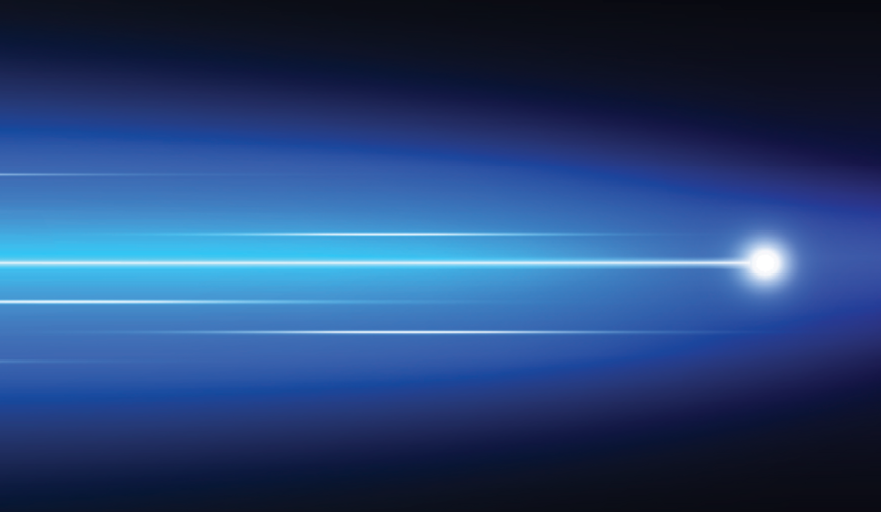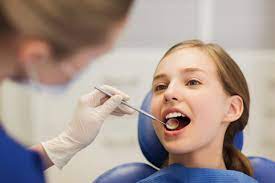UV/EB curing in Dentistry: Light Beyond the Chair Lamp
Release time:
2025-10-08
When we talk about the modern dental clinic, most people think of digital X-rays, 3D scanning, or computer-guided surgery. But behind the scenes, one of the most transformative technologies is much less visible: UV/EB curing technology. From everyday fillings to cutting-edge 3D printing, light- and electron-initiated polymerization drives many of the restorative and manufacturing processes that define dentistry today.
Where UV/EB curing is used in dentistry
Direct restorative composites (fillings)
Most tooth-colored resin composites are light-cured in the clinic using LED curing lights (blue light ~ 380–510 nm). Dentists place the composite in increments and polymerize each layer to achieve adequate conversion, strength and esthetics. Matching the curing light spectrum to the material’s photoinitiator (e.g., camphorquinone, TPO, Ivocerin) and delivering sufficient energy are critical.
Adhesive bonding systems (enamel/dentin bonding)
Bonding primers/adhesives are typically light-activated to polymerize the adhesive layer that links composite to tooth structure. Proper light exposure affects bond strength and longevity.
Resin cements and luting of indirect restorations
Many resin cements are light-cure or dual-cure (light + chemical). For translucent veneers/crowns, light activation is essential; for opaque or deep restorations clinicians use dual-cure formulations to ensure complete setting where light cannot penetrate.
Pit-and-fissure sealants and preventive resin restorations
Flowable light-cured resins are used to seal grooves and prevent caries; quick, localized light curing is routine.
Orthodontic adhesives
Bracket bonding usually uses light-cured adhesives so attachments set quickly when the light is applied.
3D-printed dental appliances and prostheses (in-lab and in-office)
Vat photopolymerization (SLA/DLP/LCD) is widely used to print surgical guides, models, temporary crowns/bridges, custom trays, and increasingly long-term restorations and aligners. Printed resins are post-cured with controlled light ovens to reach final properties. This is one of the fastest-growing dental applications of photopolymerization.
Temporary restorations, occlusal splints and custom trays
Light-curable resins and 3D-printed resins (post-cured) produce temporaries and splints with good fit and speed.
Laboratory manufacturing (industrial curing / coatings)
In the dental lab, UV curing ovens and controlled post-curing are used to finish printed parts and coatings. There is also research into EB curing for certain specialty coatings and manufacturing steps (see below).
Current situation
Routine / clinical standard today: Light-curing (LED) of direct restoratives, adhesives, sealants, orthodontic adhesives, and post-curing of 3D-printed parts. Modern polywave high-irradiance LED LCUs (multiple wavelengths) are widely used to match newer photoinitiators and shorten cure times, though technique still matters (beam uniformity, distance, time). Professional guidance (e.g., ADA) stresses matching lamp and material.
Rapidly expanding area: Vat photopolymerization 3D printing (SLA/DLP/LCD) for models, guides, temporaries, and some permanent restorations — both in dental labs and increasingly chairside. Post-curing processes and material development are active research/industry fields.
Less common / experimental: Electron beam (EB) curing in clinical dental practice is rare. EB has attractive features (very fast curing, no photoinitiators/UV spectral matching needed in some formulations, potential for solvent-free, low VOC processing) and is used industrially for coatings/inks. There are some research studies on EB irradiation effects on dental composites (mechanical changes, but also concerns like color changes), but EB requires large equipment, shielding, and is mostly suited to manufacturing/lab/industrial settings rather than chairside use.
Practical clinical considerations & limitations
Depth of cure & incremental technique: Light penetration limits how thick a composite increment can be while achieving adequate conversion; bulk-fill composites and matching LCUs help but technique remains important.
Photoinitiator / LCU matching: New photoinitiators (Ivocerin, TPO) require specific wavelengths; polywave lights improve compatibility. Mismatches reduce degree of conversion.
Polymerization shrinkage & stress: Shrinkage on curing generates stress at the tooth-restoration interface — clinicians mitigate this with layering, material selection and controlled curing protocols.
Oxygen inhibition & surface tackiness: Oxygen can inhibit surface cure; post-curing or glycerin gel can reduce inhibited layer.
Heat and ocular safety: High-power lights can heat tooth/soft tissues and pose eye hazards — safe protocols and protective eyewear are advised.
Outlook
More advanced photoinitiators and tailored resins — improving depth of cure, lower shrinkage, and better color stability; continued development to match LED spectra (polywave/light management). This will improve single-visit restorations and faster curing protocols.
Growth of chairside and lab 3D printing workflows — better biocompatible resins for longer-term use, faster printers and standardized post-curing protocols will expand in-office manufacturing (crowns, guides, splints). Expect more integrated digital workflows.
Refinements in curing devices and protocols — improved beam uniformity, smarter curing lights that sense distance/material and control dose, and evidence-based protocols to reduce shrinkage stress.
EB curing — likely in manufacturing, not clinics — electron beam technology could be adopted more in industrial dental manufacturing (mass production of resins, coatings, or curing of lab components) because EB can deliver very rapid, deep curing without some photoinitiator constraints. However, clinical adoption for chairside use is unlikely due to equipment size, shielding needs, cost, and potential colorization effects observed in studies. EB will more likely remain a production-scale tool or a research direction to create novel materials.
Bottom line (quick takeaways)
Light (UV/visible) photopolymerization is integral to nearly every resin-based dental material used clinically today — restorative composites, adhesives, resin cements, sealants, orthodontic adhesives, and the post-processing of 3D-printed parts.
3D printing (vat photopolymerization) is a major growth area for chairside and lab workflows — expect improved materials and faster, more reliable post-cure protocols.
Electron beam curing shows promise for manufacturing, but is not a routine clinical tool; research focuses on material properties and industrial processing.
dentistry
Latest News
Get a Free Consultancy
NANTONG EASTO MATERIALS TECHNOLOGY CO.,LTD.

No.118,Zhujiang Rd.,Juegang St.,Rudong County,
Nantong City,Jiangsu Province,226400,China




 2025-10-23
2025-10-23







